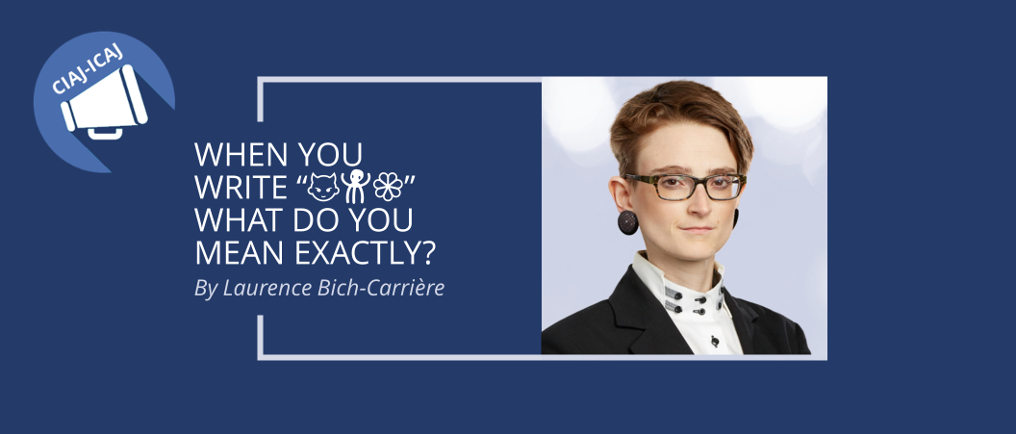Emojis and Judicial Law: A Few Challenges (1)

Part 1: When You Write “👿🐙💮” What Do You Mean Exactly?
Laurence Bich-Carrière[1]

This is how the microblog “Tweeting case law as emoji (badly)”[2] summarizes the 1665 decision of Scot and Scot v. Fletcher.[3] The case did deal with intellectual property rights in books, and indeed “the question was touching what was necessary to be proved in [some] summons.” It does not refer to basketball, or any sport, really.
Clearly, we are not on the verge of a revolution where case summaries and headnotes will be drafted in emojis. Nevertheless, these smiling faces are making their merry little way into our case law. Virtually unknown to the West before 2012, they have since become viral. In less than five years the face with tears of joy has been used 2,556,127,668 times on Twitter.[4] And if they are exploding in electronic communications, they are also exploding in court records as private discussions are filed into evidence.
For those peppering their text messaging with them, emojis are small pictograms used as an illustration or to express an emotion, to dispel an ambiguity in the message, or to show irony.
I love you ♥. What a beautiful day ☼! Looking forward to the fire drill 😕.
Of course, users are free to use emojis as they see fit: in most instances, a heart emoji will be quite simple to understand, but one could be surprised to learn that the pine tree and the maple leaf are commonly used for “marijuana” or that the emoji with the nose bubble is “sleeping” as per anime culture. And this is leaving idiosyncrasies and individual uses aside.
Picture this examination scene:
“Can you describe to us the circumstances which led to your sending the plaintiff a winking emoji?”
“I sent a smiley face.”
“Mmm, what I have here has one closed eye, that’s a winky face.”
“I always use a winky face to smile. There is nothing winky or provocative when I use that emoji.”[5]
Of course, those who send messages can explain what they meant when they included a specific emoji. All the same, those who receive messages can explain how they felt, or what they understood. But what about third-party messages? Or with instances where the author of the message cannot be compelled to testify, as in criminal cases? How should emojis be “read” during a testimony? In pleadings?
Emojis, which are staple of written culture, present, if not a paradox, at least some tension, in a legal system where orality largely remains the paradigm.
Part 2 speaks to how this tension can be aggravated by the technological nature of these elements of superscript.
[1] The author will address at the Annual Conference of Canadian Institute for the Administration of Justice. An expanded paper will be published with the McGill Law Journal.
[2] Judge Robot, “Tweeting case law as emoji (badly),” @caselawemoji, en-ligne.
[3] Scott and Scott v. Fletcher, [1665] Mor 11616.
[4] As at September 20, 2019. A website –emojitracker.com– hosts a real-time list of Twitter’s most popular emojis, since their introduction to the platform in November 2014.
[5] Based on Dix v. The Twenty Theatre Company, 2017 HRTO 394, dealing with an emoticon.

